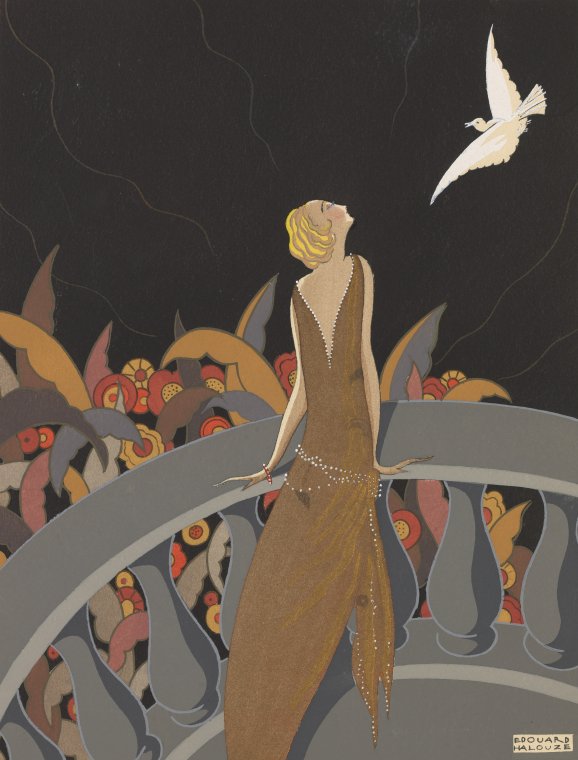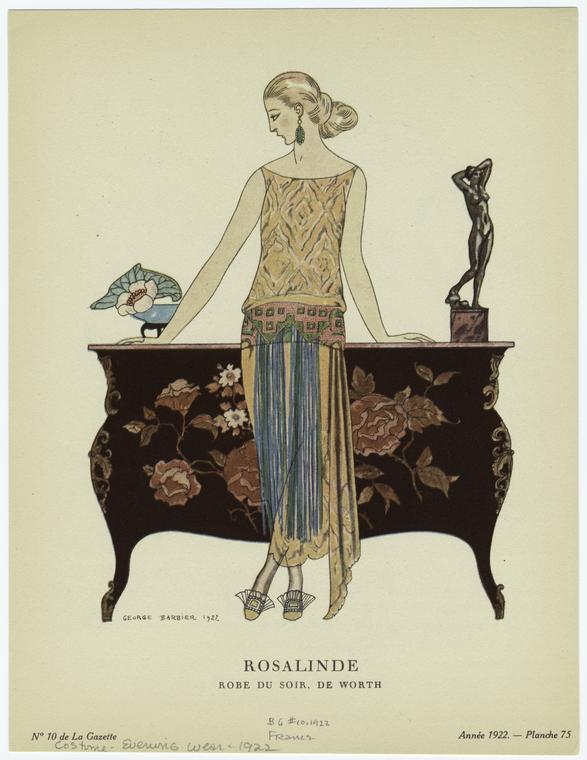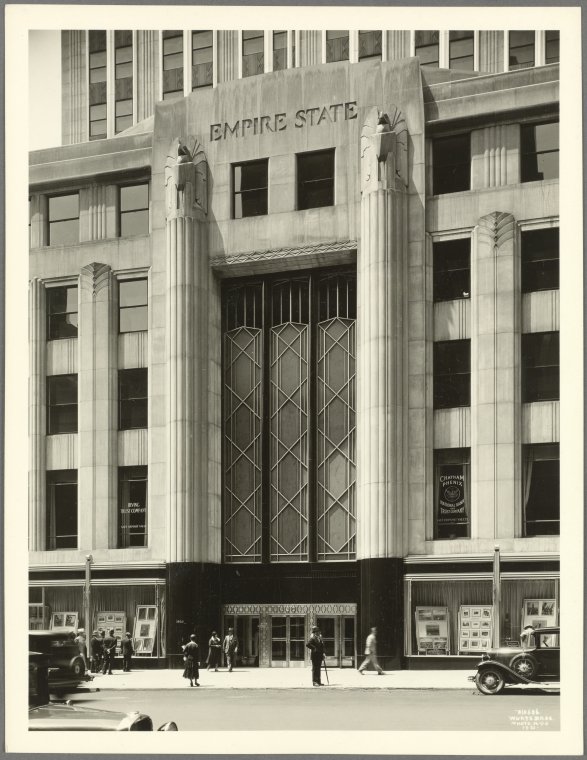Art Deco: Style with a Timeless Appeal
Art Deco is one of the most distinctive styles thanks to its far-reaching influence across the arts and culture and across time. Characterized by its sharp-edged looks and stylized geometric patterns it is a decorative style that flourished between 1919 and 1939 throughout Europe and the United States. Initially known as "le style moderne" or "Jazz Moderne" the style originated in France and garnered international attention thanks to a government-sponsored exhibition Exposition internationale des arts décoratifs et industriels modernes which occurred from April to October of 1925 in Paris.
The style was crafted by the French to represent elegance, wealth, and sophistication and served as a continuation of both the Arts and Crafts movement and Art Nouveau by continuing the trend within the decorative arts of reacting against a Machine Age standardization that was sacrificing aesthetic beauty in favor of mass production. It was a movement closely connected with an appreciation for the decorative arts which was only starting to garner validation as an art form.
The Art Deco aesthetic is closely associated with the opulence and extravagance that defined the 1920s. During its height, it was regarded as futuristic because of its streamlined forms and for that reason, it is important to understand the mood of the period during which it emerged. The Roaring Twenties, also known as the Jazz Age, was a decade that saw economic growth, widespread prosperity, and intellectual liberation. Modern technologies such as radios and automobiles were fairly new phenomenons providing individuals with access to travel, entertainment, and information in new and exciting forms. The Machine Age also introduced the possibility that commodities could be mass-produced which opened the door to notions of excess. In the United States, it also coincided with the Harlem Renaissance, the 19th Amendment (which granted women the right to vote), the liberated modern woman known as the flapper, and the notion of the modern city which resulted in the move towards erecting the modern skyscraper. Prospects were looking good.
Unfortunately, the Great Depression brought devastating effects at an international level not only deflating the economy but the lively spirit of the people as well. The once-glamorous Deco style and the notion of excess were no longer apropos and so the style evolved into a less flashy version known as Streamline Moderne. Art Deco fell out of favor in 1939 with the start of World War II and the emergence of modernism.
The 1960s brought about a resurgence of the style in both the scholarly and the popular level. This may be because of the similarities between the two periods for once again an era was emerging with a focus on liberation and the world of tomorrow. It was during this time that the term Art Deco, short for “arts décoratif,” gained popularity as the official term for the style.
The first instance during the 1960s where the term Art Deco showed up in print was with the 1966 exhibition Les Années '25': Art déco. Bauhaus. Stijl. Esprit nouveau curated by Yvonne Brunhammer at the Musée des Arts Décoratifs in Paris. She would later go on to curate other exhibitions on the style, such as the exhibition on French glass designer René Lalique, and ultimately publish a book in 1984 entitled The Art Deco Style.

Then there was the newspaper article published in a November 1966 edition of The Times (London) which discussed the recent interest in 1920’s fashion and ornamentation. The article, "Art Deco" by Hilary Gelson, addresses the popularity of the term by individuals who she dubs “connoisseurs.” She mentions the Brunhammer exhibition of the same year to point out the increase in interest and even provides suggestions for “shopping in the 1920s style”.
Pop art was at its height during the 1960s but it did not stop Art Deco from penetrating the world of artists. Roy Lichenstein, for example, was influenced by the style, creating retro-modernist works that encompassed a 1920s feel with a futuristic appeal. Another artist who became interested in the style was, “collector extraordinaire,” as a Washington Post article described him, Andy Warhol, who had amassed a rather impressive collection of Art Deco which ended up selling after his death at a 1988 Sotheby’s auction.

It was with the publication of the 1968 book Art Deco of the 20s and 30s by art historian Bevis Hillier that the term “Art Deco” amassed widespread popularity. It is the first major academic book focused on answering the question “What is Art Deco?” He explains the term as stemming from the title of the 1925 French exhibition that showcased the style to the international community and mentions why he prefers this term for describing the style.
“First, it is easily anglicized, simply by removing the accent. Secondly, this name has a similarity to Art Nouveau which rightly suggests a kinship between the two styles. Thirdly, “Art Deco” unlike the other names, does not associate the style only with the 1920s...Finally, Art Deco is already a name in reasonably common use."
Since the 1960s, Art Deco has had other revivals. For example, during the 1970s it also managed to garner interest thanks to the release of the 1974 film The Great Gatsby which romanticized the era and starred Robert Redford and Mia Farrow. In the 1980s the style also influenced the Italian avant-gardist Memphis Group which caused another resurgence that was later picked up by the television series Miami Vice.
The enduring appeal of Art Deco is quite remarkable. We believe that it is due in part to the fact that it is a style that truly permeates every aspect of the arts giving it an everlasting quality. It is a symbol of the modern city and can be seen in the architecture of big and small cities alike. It is a style focused on the essence of what is visually appealing. It is also a paradox both nostalgic yet vanguard. We never know when it will pop up again.
Are we due for another resurgence? An April 2020 Washington Post article points to the similarities between 1920 and 2020 and claims that the time is here. To this, we say that we are ready...
For anyone interested in the style we would like you to know that the Art & Architecture Collection has excellent holdings of primary resource materials on the style. This includes pattern books, design manuals, and catalogs from the original Paris Exposition of 1925. Many secondary resource materials are also available in the Library collections, from monographs on art, architecture, and design to survey histories of the period.
In conjunction with this blog post, we have also prepared a Libguide titled Art Deco: A Research Guide and our librarians are available to help answer questions via email at art@nypl.org.
Sources
"A century after art deco’s birth, designers say we’re due for a revival" Washington Post. (1974-Current file), Apr 2 2020, p. E1 Gale Academic OneFile. 17 August 2020.
"Art Deco" Times (London, England). (1785-Current file), Nov 2 1966, p. E1 Times Digital Archive. 17 August 2020.
Brunhammer, Yvonne. (1984). The Art Deco Style. New York: St. Martin's
Brunhammer, Yvonne. (2007). René Lalique: Inventeur du Bijou Moderne. Paris: Gallimard.
Doris, Sara. (2014). "Roy Lichtenstein’s Retromodernism". American Art, 28(2), 88-105.
France. Ministère du commerce. (1925). Exposition Internationale des Arts Décoratifs et Industriels Modernes. Paris: Imprimerie de Vaugirard.
Guffey, Elizabeth E. (2006). Retro: The Culture of Revival. London: Reaktion.
Hillier, Bevis. (1968). Art Deco of the 20s and 30s. London, Studio Vista.
Margulies, Phillip. (2004). The Roaring Twenties. San Diego, Calif: Greenhaven Press.
Radice, Barbara. (1984). Memphis: Research, Experiences, Results, Failures, and Successes of New Design. New York: Rizzoli.
Sanders, Steven. (2010). Miami Vice. Detroit: Wayne State University Press.
Sotheby's. (1988). The Andy Warhol Collection: Sold for the Benefit of the Andy Warhol Foundation for the Visual Arts. New York: Sotheby's.
"The Collected Legacy of Andy Warhol" Washington Post. (1974-Current file), Mar 13 1988, p. E1 ProQuest Historical Newspapers. 17 August 2020.
Union centrale des arts décoratifs. (1966). Les Années '25': Art déco. Bauhaus. Stijl. Esprit nouveau. Paris, France: Union centrale des arts décoratifs.

Read E-Books with SimplyE
 With your library card, it's easier than ever to choose from more than 300,000 e-books on SimplyE, The New York Public Library's free e-reader app. Gain access to digital resources for all ages, including e-books, audiobooks, databases, and more.
With your library card, it's easier than ever to choose from more than 300,000 e-books on SimplyE, The New York Public Library's free e-reader app. Gain access to digital resources for all ages, including e-books, audiobooks, databases, and more.
If you don’t have an NYPL library card, New York State residents can apply for a digital card online or through SimplyE (available on the App Store or Google Play).
Need more help? Read our guide to using SimplyE.


